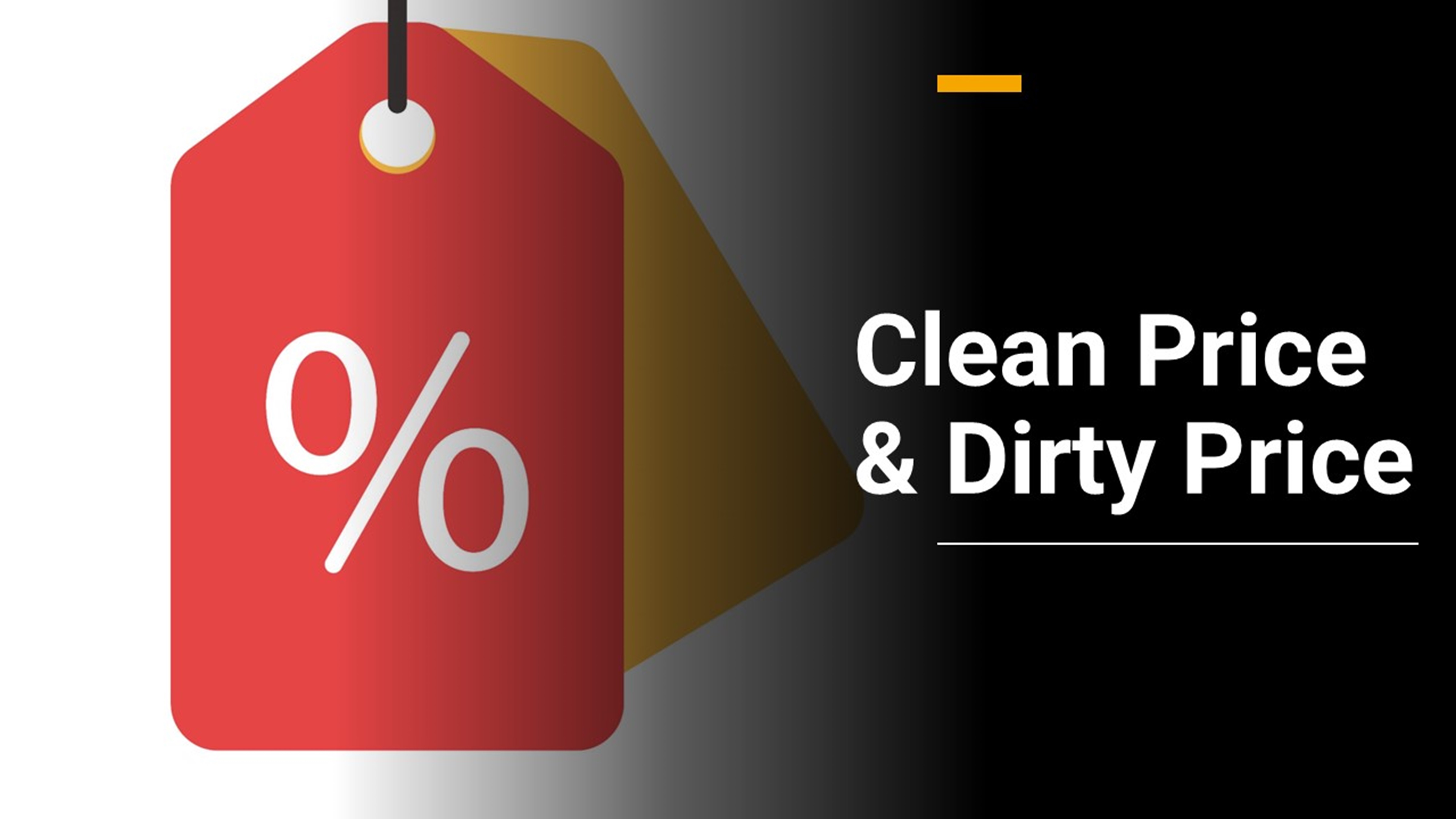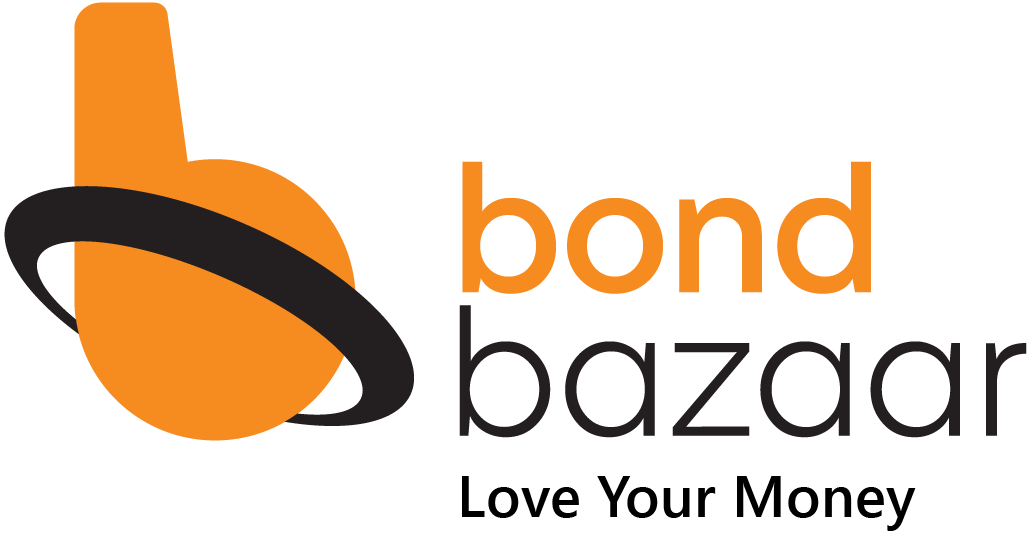What are Clean Price and Dirty Price in Bonds?

When dealing with bonds, you might come across two slightly different values for the same investment. This isn’t a glitch or mistake—it’s a normal part of how bonds are priced. These two values are called the clean price and the dirty price of a bond.
Understanding the clean price vs dirty price helps investors know exactly what they’re paying or receiving. It’s especially useful when buying or selling bonds between interest payment dates. These pricing terms ensure transparency in transactions and help compare bonds more accurately.
In this blog, we’ll break down the difference between clean price and dirty price, explain why they matter, and walk through simple examples to make bond pricing easier to understand, even if you're just getting started.
What Is a Clean Price?
The clean price is the base price of the bond, without counting any interest it has built up since the last payment. Think of it as the sticker price of a product.
- Another name for it is flat price or quoted price.
- It's the price you see listed in newspapers or online bond trackers.
Why is this useful?
It helps you easily compare different bonds without worrying about how much interest is building up.
What Is Dirty Price?
The dirty price of a bond includes the clean price + any “accrued interest”.
Accrued interest means the interest that the bond has earned since the last payment date but hasn't been paid yet.
- Another name is full price or settlement price.
- It changes every day between interest payments, because each day more interest gets added.
Imagine you buy a bond today, but its last interest payment was a month ago. You still get interest for that month, so the dirty price adds that month’s worth of interest.
Clean vs Dirty Price
|
Feature |
Clean Price |
Dirty Price |
|
Includes Accrued Interest? |
No |
Yes |
|
What You See Quoted |
Yes |
No |
|
What You Actually Pay |
No |
Yes |
|
Changes Daily? |
Only if the market value changes |
Yes, every day it increases |
Let’s try an easy real-world example:
- Bond Details: ₹1,000 face value, 10% annual interest, paid every 6 months (₹50 every half-year).
- Clean Price: ₹980 (this is what it’s listed at in papers).
- You buy it 3 months after the last interest payment.
- In 6 months, you earn ₹50. That means each month is worth ₨50 / 6 ≈ ₹8.33.
So:
- Accrued Interest: ₹8.33 × 3 months = ₹25.
- Dirty Price = Clean Price + Accrued Interest = ₹980 + ₹25 = ₹1,005.
You actually pay ₹1,005, but ₹25 goes back to you soon as interest. So your effective purchase price is ₹980!
Why Do Both Prices Matter?
When you're buying or selling bonds, both the clean price and dirty price play an important role, especially if you want to make smart, informed decisions.
The clean price helps you compare different bonds fairly. Since it doesn’t include any interest that has built up (called accrued interest), it shows the bond’s core value. This makes it easier to see which bond offers better returns or fits your budget, without any hidden extras.
But when it comes to actually buying the bond, what you pay is the dirty price. This is the clean price + accrued interest, or simply the full amount that changes hands. It reflects the exact cost to the buyer and the full amount the seller receives.
Understanding the difference between clean price vs dirty price gives you clarity. You know the true value of the bond, and also what you’ll actually pay. Whether you're checking the dirty price of a bond before placing an order or comparing investments using the clean price, both terms help you avoid confusion and make confident choices.
Accrued Interest Changes Every Day
Between interest dates, the dirty price goes up every day by a bit of interest. Once the bond pays interest, the count resets to zero and starts again.
Let’s say:
- Bond pays ₹100 every year (10% of ₹1,000).
- Bought 2 months after the last payment.
Accrued interest = (₹100 ÷ 12) × 2 ≈ ₹16.67
Clean price = ₹950
Dirty price = ₹950 + ₹16.67 = ₹966.67
Why Bondbazaar Mentions Both Prices
Bondbazaar believes in full clarity, which is why both the clean price and dirty price of a bond are shown upfront.
- The clean price helps you easily compare bonds—no confusion, no hidden interest.
- The dirty price tells you the exact amount you’ll pay, including any interest that’s already built up.
This way, you know exactly what you’re getting into before you invest.
Here’s what makes us stand out:
- Thousands of bonds listed – from government to corporate bonds, all easy to filter by clean or dirty price.
- Zero brokerage – you get the same great prices that big institutions do, with no hidden charges.
- Expert help on demand – not sure what to choose? Our team is just a click away to guide you.
With Bondbazaar, bond investing feels less like guesswork and more like a confident decision.
Conclusion
Knowing the difference between clean price and dirty price helps you make smart bond choices. The clean price makes it easy to compare bonds fairly. The dirty price, which includes accrued interest, shows the exact amount you need to pay. With Bondbazaar, you can view both prices clearly, enjoy zero brokerage, and get expert help whenever you need it. Whether you’re buying safe government debt or high-yield bonds, understanding these prices ensures you pay the right amount and understand what value you're actually getting.
Frequently Asked Questions
1. What is the difference between clean price and dirty price of a bond?
A clean price excludes accrued interest, while a dirty price includes it. Dirty price is what you pay; clean price helps compare bond values.
2. Why do bonds have a clean and dirty price?
This system separates a bond’s core value from the interest already earned but unpaid, ensuring pricing transparency between buyer and seller.
3. Is accrued interest taxable in bond transactions?
Yes, the interest received (part of the dirty price) may be taxable based on the bond type and investor’s tax slab.
